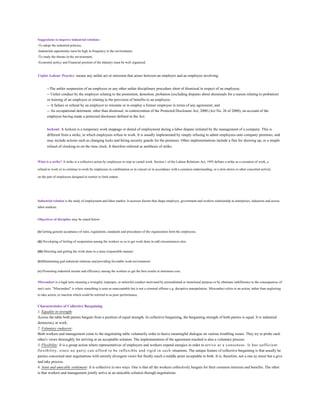The document discusses several topics related to industrial relations and labor practices:
1. It provides suggestions to improve industrial relations such as adopting industrial policies, having high opportunities in the environment, and ensuring economic and financial stability.
2. It defines unfair labor practices and grievances as complaints by employees against employers, such as disciplinary actions, promotions, and occupational issues.
3. It also discusses the importance of having grievance procedures to resolve disputes effectively and avoid costly legal claims, as well as maintaining good employee morale.

